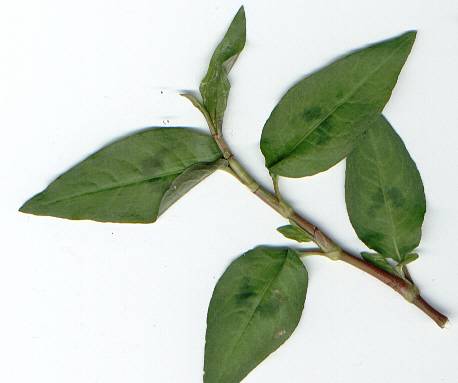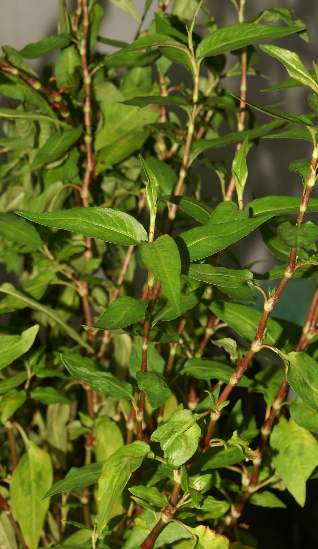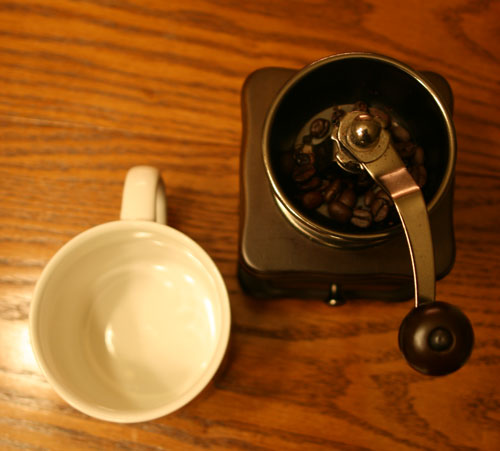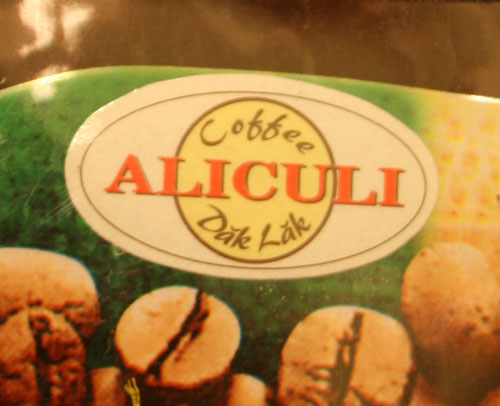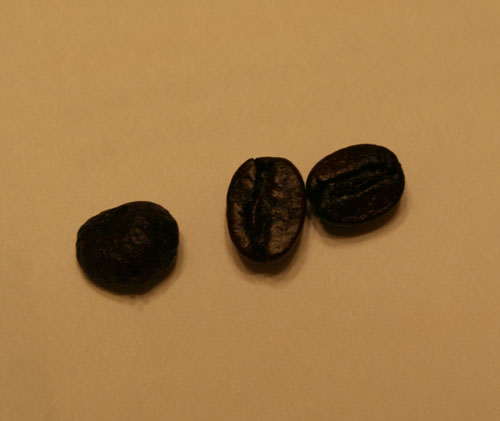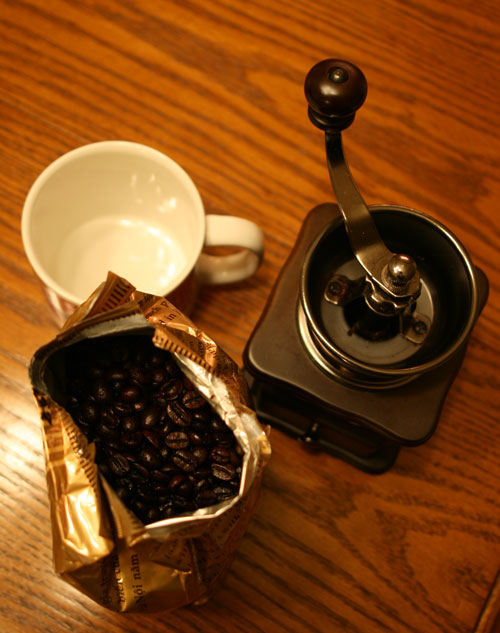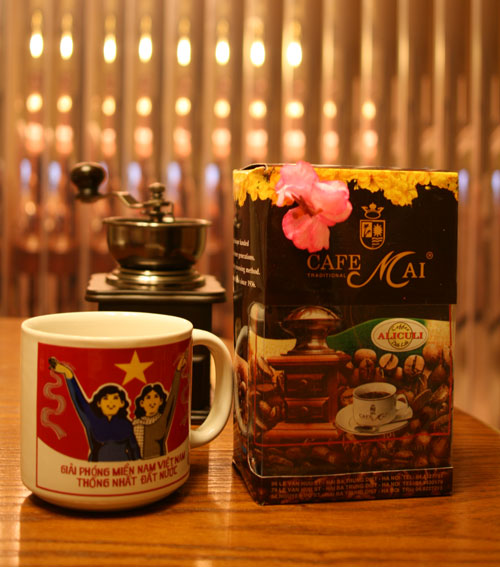YOU won't find the place at first. No one ever does. Tucked between two silk shops on a busy stretch of Hanoi's Hang Gai, down a narrow passage that leads to a little courtyard garden, the Café Pho Co has as much a quality of new discovery about it on the 50th visit as on the first.
Known by some residents of Hanoi as the secret cafe, it's an oasis quite apart from the motorbike-choked streets of Hanoi's Old Quarter. The low tables are flanked by vases of lotus flowers, and ornamental Japanese pigeons with feathery spats and fan-shaped tails wander serenely among them. The owner's art collection hangs on the walls, and the canvasses are deeply stained from the rains -- the water deepens the colors, he says. Midmorning, the cafe is empty, except for a few groups of old men playing chess over their coffee.
The coffee at the Café Pho Co is some of the best in Hanoi, a city that takes its coffee seriously. Unlike the rest of Asia -- a tea-drinking continent, by and large, and a wasteland of instant Nescafé packets for your java-loving Western traveler -- Vietnam has a cafe culture to rival Italy's. Along with the colonial architecture and the fresh baguettes that are still sold on street corners, coffee is one of Vietnam's most pleasant legacies from its years of French rule.
Teeming traffic aside, the pace of life is quite gentle here still, and almost any Vietnamese you'll meet, regardless of age or class, has a favorite local cafe, where many hours are spent gossiping and smoking and sucking down the ultrastrong, ultrasweet ca phe sua da (espresso served in a tall glass with crushed ice and sweetened condensed milk), which is the favorite local coffee preparation. Typically, you'll pay 20 to 40 cents a cup.
It's a restrained sort of cafe culture: no flamboyant umbrellas, no tables spilling out onto the sidewalks. People-watching isn't really what it's about. The typical Hanoi cafe is a tiny space, often just a storefront with a beaded curtain separating it from the street. Hanoi's Old Quarter -- the 36 market streets, each named during the 13th century after the trade guild that sold its wares there -- is packed with such family-run establishments.
The interior of these cafes, like Café Quynh on Bat Dan Street, is usually quite dark -- a relief from the tropical sunlight outside -- and the mood is hushed. A cup of coffee is an affordable luxury in a country where the average household income hovers around $300 a year, and Hanoi residents come to cafes to escape the heat of the day, to relax, and to sip a cup of a grainy, bittersweet local blend.
Like so much else in Vietnam, that cup of coffee has a bittersweet history. It was the French colonists in Indochina who established Vietnam's first coffee plantations, in the late 19th century, exploiting the local peasants as cheap labor. Ninety years ago, the cafes that lined Hanoi's boulevards were mainly the preserve of the city's wealthy foreign residents.
These are not things most people in Vietnam care to dwell on nowadays. Yet in early February this year, a spate of demonstrations in the country's main coffee-producing region, Dac Lac and Gia Lai Provinces in the Central Highlands, made coffee the political issue of the moment. Ethnic minority groups in the region were protesting the seizure of their lands, which were to be turned into government-owned coffee plantations, and Vietnamese troops were dispatched to maintain order.
Even with troops in Buon Me Thuot, the capital of Dac Lac Province, sales of Buon Me Thuot coffee in Hanoi's cafes continued brisk as ever, and life remained serene. The free-market overhauls of the last decade -- the so-called doi moi, or renovation -- are changing Hanoi, but the city, the seat of power of Vietnam's Communist government, is still far sleepier than Ho Chi Minh City to the south.
Development has been kept in check, and the many layers of the city's 990-year history are visible everywhere. The gates of ancient pagodas are dwarfed by the modern, narrow ''tunnel houses,'' and the crumbling villas of the French district have been converted into embassies or multifamily residences. The tree-lined avenues around Lake Hoan Kiem are decorated with propaganda billboards urging various things: attend to your children's education; protect against H.I.V.
In my previous life -- which is to say before I graduated from college and took an editing job in Hanoi -- a cup of coffee was simply a crutch for the sleep-deprived. I nursed acidic cups of student-center black through long lectures and sneaked 24-ounce thermoses of the stuff into the library during exam time. I developed a taste for coffee, to be sure, but can't recall very much of it that I really wanted to linger over.
Vietnamese coffee, on the other hand, taught me to linger. At the Café Mai, a small open-air establishment on Le Van Huu Street, south of Lake Hoan Kiem, you can order a ca phe sua da, and the waitress will bring out a glass of ice and syrupy yellow milk (sweetened condensed milk keeps better in the heat) with a lidded metal contraption perched on top.
The cup of the contraption contains a tin plunger, screwed down tight over a spoonful of powder-fine coffee grounds. Hot water drips down through the grounds, through small perforations in the metal, into the glass below.
There's an aspect of ritual to it: sitting, waiting, watching the coffee brew right over your own glass. The whole process takes about 10 minutes, and the resulting drink is so sweet that some newcomers to Vietnam find it overwhelming. But sipped slowly, through chips of ice, the sweetened condensed milk gives ca phe sua da a mellow, caramel flavor, and makes it a wonderfully cooling drink on a summer afternoon.
Once you've finished, you'll probably also be offered a cup of green tea -- said to cleanse the mouth -- as a chaser. Food is not generally part of the experience: it's not even available in most traditional cafes.
Though you won't find a Starbucks in Vietnam, there is no shortage of variety in Hanoi's cafes. Besides the standard four coffee drinks -- ca phe den nong (hot black coffee), ca phe den da (iced black coffee), ca phe sua nong (hot coffee with milk) and ca phe sua da (iced coffee with milk) -- available in any cafe, there is ca phe trung, hot coffee with a raw egg beaten into it, with or without milk, which tastes a bit like flavored meringue. With sugar, it is practically a meal. My favorite place for this is Café 129, at the southern end of Mai Hac De, one of Hanoi's busiest restaurant streets.
For the truly adventurous, there is the infamous ca phe chon, weasel coffee, which is exactly what it sounds like. Growers take the best beans from each crop, and feed them to a weasel. The weasel does what comes naturally, the beans are collected at his other end, then ground and brewed as usual. Apparently, the weasel's digestive system does something mysterious to the beans which makes them smoother and tastier than any other kind of coffee.
It took me some months to gather up the courage to try ca phe chon, which I finally did at the Café Trung Nguyen, near the Hanoi People's Committee Building just east of Lake Hoan Kiem, under pressure from a visiting friend. The drink is undeniably smooth, but it has a faint musky taste, which I can only assume to be the weasel.
The day a visitor to Vietnam can order a grande-skim-no-whipped ca phe chon to go is probably years away, yet the character of Hanoi's cafe society is changing. Since 1996, dozens of Trung Nguyen coffee shops, a nationwide chain that is Vietnam's first domestic franchise, have sprung up all over the capital. They are decorated with photos of pop stars, and packed day and night with trendy students. Hanoians complain that shops that used to serve only coffee are forced to diversify their menus and offer other things -- lime soda or coconut juice, for example -- just to compete.
But smaller, traditional cafes still abound, and they are a good way for a first-time visitor to experience a bit of Vietnamese daily life. So, when you're wandering through Hanoi's Old Quarter and the afternoon heat and the haze and the traffic become too taxing, go in.
Let your eyes get used to the light, and find a table with a good view of the street. There are family photographs on the walls, perhaps a battered Happy New Year! calendar. And the usual display of the cafe's wares are on the counter at the back: cans of Coke and Sprite stacked in neat pyramids, bottles of Tiger beer, jars of Ovaltine, big glass jars of apricots in syrup, Vinataba cigarettes, Juicy Fruit and Doublemint gum in their little revolving display case.
A child may bring a menu. Then you can make your request: ''Xin cho toi mot ca phe sua da'' -- one milk coffee, please.
For a respite, with a coffee worthy of Deneuve
Most of Hanoi's cafes open at 6 or 7 a.m. and close around 9 p.m. While English isn't likely to be understood in the cafes, many menus have English translations, so visitors can point to their requests.
Café Mai, 79 Le Van Huu Street, has been in operation since 1936, and prides itself on its French grinding techniques. Several varieties of Arabica and Robusta coffee are available for 20 to 40 cents a cup, at the
rate of 15,000 dong (pronounced dahm) to the dollar.
The cafe's shop, across the street at 96 Le Van Huu, sells beautifully wrapped packages of Vietnamese coffee for about $4.30 to $13.30 a kilogram (about 2.2 pounds).
Café Pho Co, 11 Hang Gai, the ''secret cafe,'' has a limited menu, but the setting is otherwordly, a narrow courtyard decorated with the owner's collection of ancient and contemporary Vietnamese art. A glass of ca phe sua da costs 30 cents.
Café Quynh, 46B Bat Dan Street, is one of the most popular Old Quarter coffee shops. It is run by the family of the cafe's namesake, Nhu Quynh, a popular Vietnamese film actress, and her pictures hang on the walls. The cafe attracts an artsy crowd, but is in most respects an old-fashioned Hanoi cafe, dimly lit and calm.
Coffee is about 30 cents a cup, Tiger beer 50 cents, and a glass of salted apricot juice -- which tastes a lot better than it sounds -- 30 cents.
Trung Nguyen, Vietnam's first domestic franchise, has branches throughout the city, serving about a dozen different coffee blends in their noisy, trendy cafes. These cafes, with their distinctive brown-and-yellow signs, are very popular with students and young professionals.
One of the largest Trung Nguyen shops in Hanoi can be found on Dinh Tien Hoang Street, on the eastern shore of Lake Hoan Kiem, in the heart of the city. A large range of coffee blends starts at 20 cents a cup, with a cup of ca phe chon, weasel coffee, costing 80 cents.
Café 129, 129 Mai Hac De Street, is one of the few coffee shops in Hanoi offering fresh milk for coffee. It also serves an excellent rendition of the ca phe trung (with raw egg) for 40 cents. The shop is very popular among expatriates for breakfast and brunch. A full English breakfast, including eggs, baked beans, bacon, mushrooms and grilled tomatoes, costs $1.30.
Café 252, 252 Hang Bong, at the far western edge of the Old Quarter, serves wonderful coffee for 40 cents a cup, as well as croissants, pains au chocolat, apple turnovers, raisin buns and the like, all baked on the premises and costing from 20 to 50 cents (the owner, Le Huu Chi, learned his baking skills in New Caledonia, a French territory). Café 252 is also famous for its homemade yogurt, served with honey or fresh fruit, for 30 cents.
As pictures on the walls document, Catherine Deneuve had breakfasts there while she was filming ''Indochine.'' KATHERINE ZOEPF
